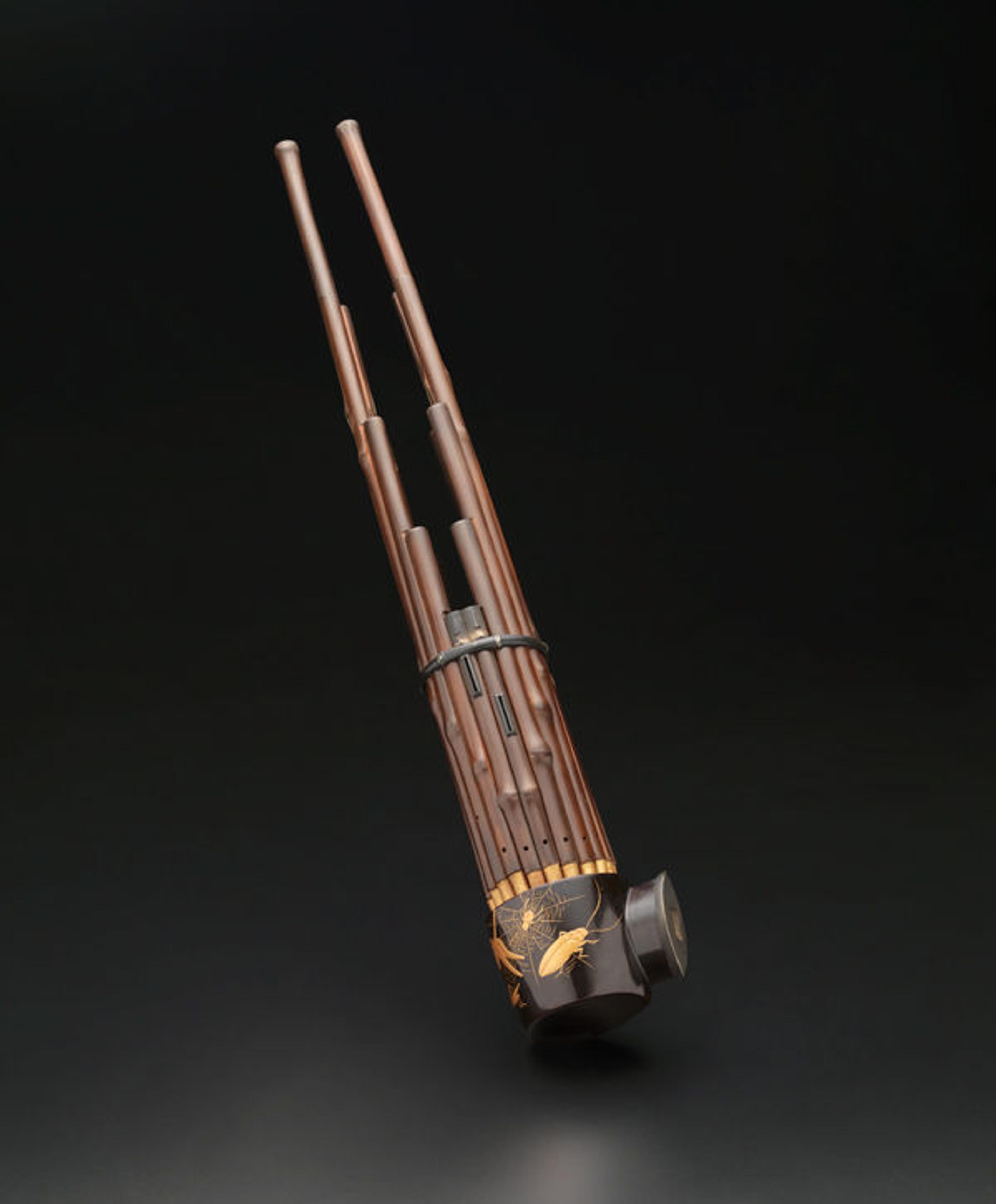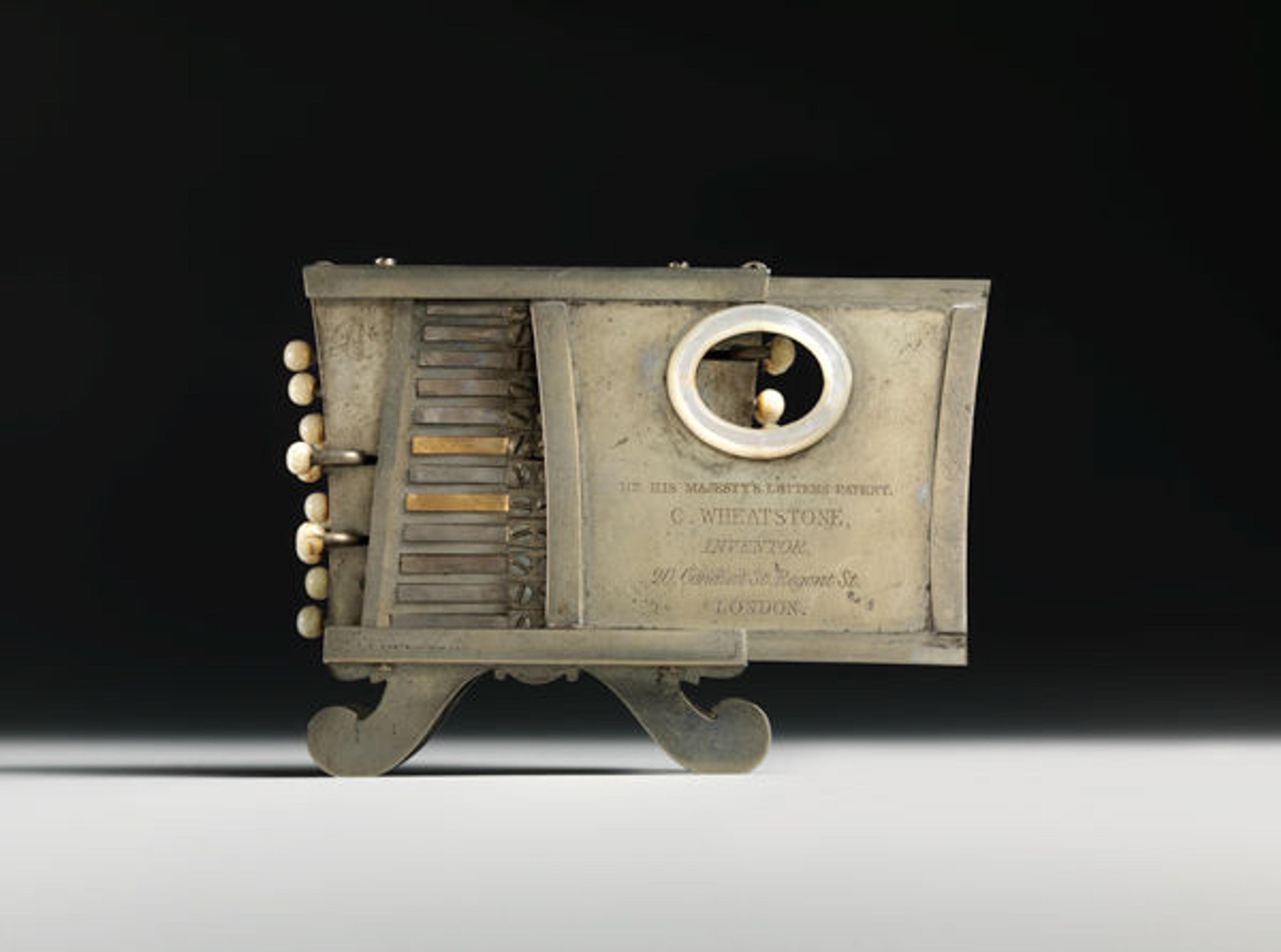
Shō, 19th century. Japan. Bamboo wood, metal; H. 48.3. cm (19 in.), Diam. 7 cm (2 3/4 in.). The Metropolitan Museum of Art, New York, The Crosby Brown Collection of Musical Instruments, 1889 (89.4.2957)
«The Department of Musical Instruments recently published a highlights guide, Musical Instruments: Highlights of The Metropolitan Museum of Art, which features approximately one hundred objects from around the world. Representing cultures from the ancient to the present, each object is accompanied by text that chronicles its historical, technological, or musical importance. Throughout the book, themes connect objects across time and place, and in the case of free-reed instruments, illustrate the cultural exchange of musical ideas.»
A free-reed instrument is a wind instrument that has flexible metal tongues, or reeds, that are located inside the wind chamber and are each attached at one end to a stationary plate. Sound is produced when air is blown over the plate, causing the unattached end of the reed to vibrate "freely." Each reed produces a single pitch that can be made to sound softer or louder as a performer varies the air pressure. Examples of free-reed instruments include harmonicas, accordions, and concertinas, among others.
Free reeds have been used in instrument making in the Far East and Southeast Asia since antiquity. A beautiful Japanese shō in the Museum's collection is an example of a free-reed instrument, in which the player blows into the mouthpiece projecting from the base. Each of the fifteen sounding pipes of this shō has a metal reed that is mounted in its base and concealed within its decoratively lacquered wind chamber. The pipes are arranged to symbolize the folded wings of the mythical phoenix, whose cry the shō's sound is said to represent. The design of the instrument allows multiple notes to be played at once, and its sustained chords are a distinctive feature of the ancient Japanese court music gagaku. The sound chamber is decorated with elegantly depicted insects, possibly inspired by the works of Kitagawa Utamaro, whose illustrated books of insects were extremely popular in late eighteenth- and early nineteenth-century Japan.

Charles Wheatstone (1802–1875). Symphonium, ca. 1835. London, England, United Kingdom. Nickel silver and various materials; Width across top: 61 mm (2 3/8 in.), Height: 70 mm (2 3/4 in.), Depth including ring: 37 mm (1 7/16 in.). The Metropolitan Museum of Art, New York, The Crosby Brown Collection of Musical Instruments, 1889 (89.4.2085)
The method of sound production in the free-reed Asian mouth organs captured the imagination of the English inventor, physicist, and telegraph pioneer Charles Wheatstone. In 1829 he patented a design for a small mouth organ that he named the symphonium. In the patent he even illustrated a Chinese mouth organ known as the sheng, the forerunner to the Japanese shō.
The symphonium is played by blowing into its mouth hole, which here is edged with mother-of-pearl. (The Met's instrument is pictured above with its sliding cover open to reveal its reeds, but would have been played with the cover closed.) The buttons, which direct air into the desired reed chambers, are reminiscent of those on Wheatstone's early telegraph transmitters. The Museum's example is a later Wheatstone design that has twenty-four notes, a full two-octave chromatic scale.
Despite this innovation, Wheatstone's most famous musical invention—the more versatile, bellows-blown concertina—eventually superseded the symphonium. The popularity of Wheatstone's inventions soon prompted the creation of other free-reed instruments—among them the harmonica, accordion, and various forms of reed organ. Other innovators introduced unusual designs that resulted in lesser-known free-reed instruments such as the cécilium, melophone, and Apollo lyre.
Related Links
The Met Store—Musical Instruments: Highlights of The Metropolitan Museum of Art
Of Note—"From the Ancient to the Present: Musical Instruments at the Met" (October 19, 2015)